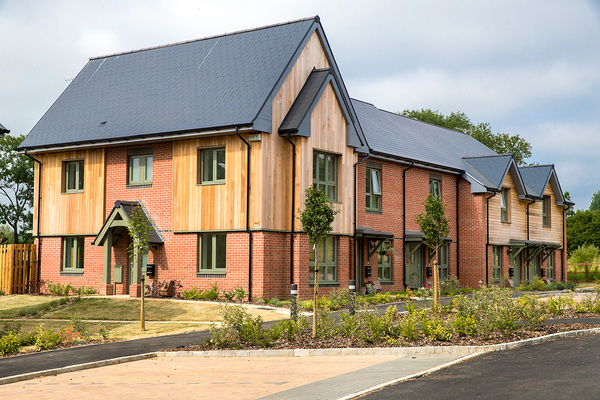
Nick Atkin is chief executive of Yorkshire Housing
It’s time for social landlords to change how they deliver homes to reach the net zero target
In sustainability terms, the sector is currently offering up 1980s Ford Escorts when the world demands a Tesla. It’s time to change what we do and reach more quickly for net zero, argues Nick Atkin
One of the most important challenges is how we reduce our impact on this wonderful planet we all share.
It’s a global challenge which involves everyone, and the housing sector has a big role to play in this. We need to change how we do things. From how we build and the technology we use, to how we work and collaborate with others, both in and out of the sector. We need to invest and be bold in our approach to benefit the environment and our customers.
The future of housing is green, with the government’s target set for net zero carbon emissions by 2050.
The Energy White Paper has some bold housing targets. One of these is that all social homes should have an energy performance certificate (EPC) rating of C by 2035 where possible. From next year, building regulations will require all new homes to reduce carbon emissions by 31%.
The problem is that we don’t have all the answers to meet this challenge This is because many of the solutions don’t yet exist.
We are where the car industry was 20 years ago.
Its initial response to lower carbon emissions was to shift from petrol to diesel. But it soon became apparent this wasn’t enough. The choice was then between hydrogen or electric vehicles and the technology for these didn’t exist. So, while finding the solution, platforms were built (the car chassis) that could be adapted as and when needed.
We can learn from this approach.
The starting point needs to be a national energy strategy. We are where the country was 45 years ago at the dawn of nuclear power. The same national strategy and infrastructure is now needed for renewables, and for housing, on whether the future is hydrogen so that we can adapt our chassis accordingly.
At Yorkshire Housing, we’re making a big shift to how we build homes of the future. From 2026, we have an ambition to build net zero carbon homes. We’re also developing sustainable standards for our new build homes that includes the end of fossil fuel heating systems. The homes we build will reduce carbon emissions by more than 80%.
Like many others, we’re moving to carbon-free solutions. We’ve retrofitted more than 400 homes with air and ground-source heat pumps – this renewable technology is much more efficient. We’re also exploring the use of smart heating controls to give customers greater control of their heating and reduce carbon emissions and energy bills. We will also fit solar PV panels to all new homes from later this year.
We know the solution isn’t just in how we build new homes. We need to improve existing homes and retrofit wherever possible. But for some of our existing homes, this isn’t a viable option and there are some tough decisions to be made.
The vast majority of our homes are still pretty much fitted out in the same way they were in the 1980s. In car terms, we’re offering a 1985 Ford Escort when the world expects a Tesla.
Investment in smart tech offers the potential to revolutionise services and move the landlord offer from a reactive to a pre-emptive approach. This includes a menu of options, from boiler sensors that can alert us to issues before they happen, to smart locks and keyless entry, to mould and damp sensors. These will improve the customer experience by tackling issues early and have the added benefit of reducing needless call-outs.
“The same national strategy and infrastructure is now needed for renewables, and for housing, on whether the future is hydrogen so that we can adapt our chassis accordingly”
As a sector, we can use what we learned about remote working during the pandemic as a catalyst for a greener approach. We can easily reduce our carbon footprint by moving to a hybrid way of working to reduce needless daily commutes.
At Yorkshire Housing, we’ve moved colleagues to agile home-working contracts and are looking at options for a workspace designed for collaboration instead of a traditional office. Our new hub, home, roam approach will save around 70,000 commutes a year.
Around 15% of fuel-poor households in England live in social housing. Let’s be honest about this – being fuel poor for many means that they may have to choose between eating and heating. And that’s just not acceptable in any society. While we can provide people with a place they’re proud to call home, we also need to ensure it’s also one they can afford to heat.
We must play our part in tackling the climate emergency. The changes we make can also turn the tide on fuel poverty and help thousands of people achieve a better standard of living. As social landlords, it’s time to reinvent how we deliver and build a green, sustainable future.
Nick Atkin, chief executive, Yorkshire Housing











